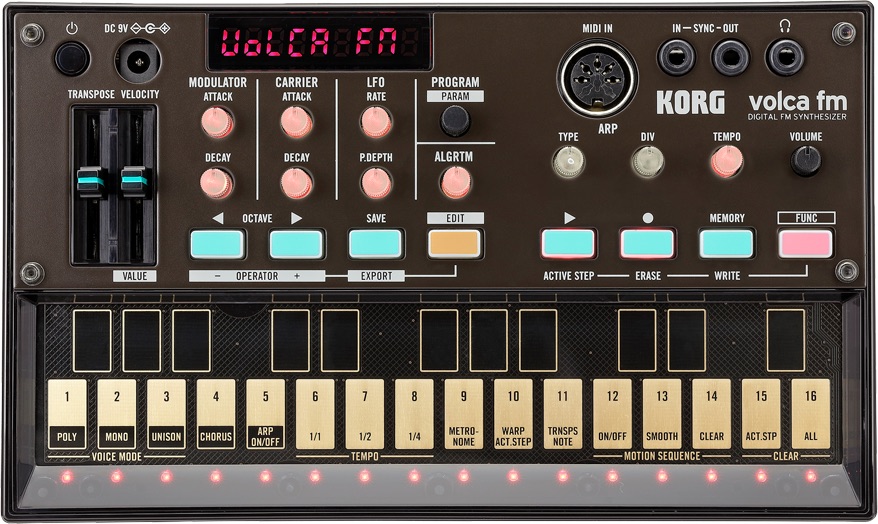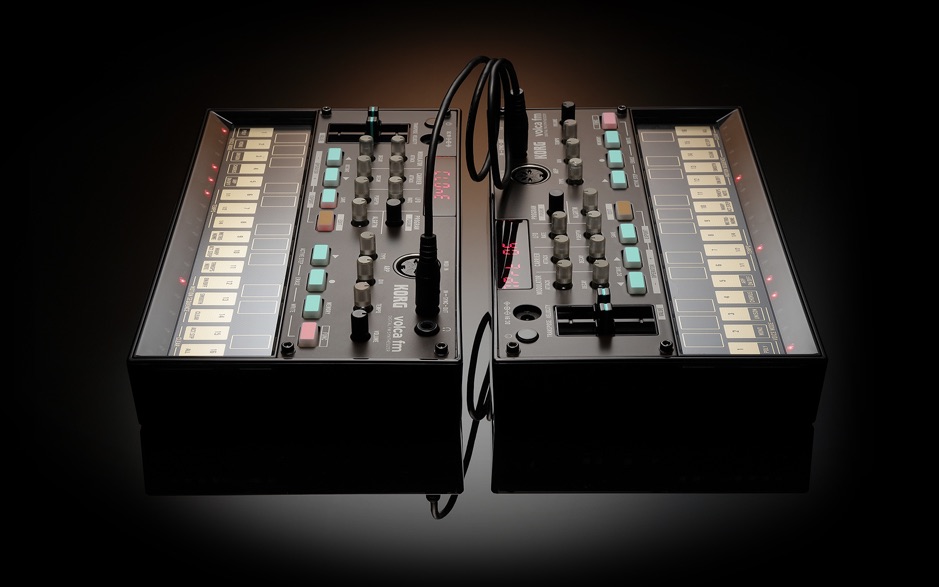KORG’s runaway-hit volca series has proven small can be fun. But the volca FM promises more power in a small package. The volca FM, teased in California in January and demoed in early prototype form, is now official. And part of why we’re eager to get our hands on one is that it’s more than just another little synth box. Okay, so it’s a 6-operator FM synth that’s fun to play with – that you probably got right away. But it’s also a way of loading vintage FM patches, and has powerful editing features. Let’s look and listen.
Here’s a listen to some early sound samples.
The basics: it’s 3-voice polyphonic, capable of 6-operator synthesis. That gives it some classic 80s bass and electric key sounds, as well as more far-out metallic timbres.
And being a volca, you get quick access to a sequencer – now with WARP ACTIVE STEP and PATTERN CHAIN. PATTERN CHAIN lets you create longer patterns, up to 256 steps. Also, the volca now includes an unexpected arpeggiator, too.
Of course, there’s hands-on, twist-and-see-what-happens control of parameters. Modulation/carrier moves are one way to do that quickly, and you can also mess around with actually switching presets as you play. There’s also an onboard chorus effect.
But it’s the editing side where you might be surprised.
It loads vintage patches. SYS-EX/SYX dumps from an original Yamaha DX7 work here on the volca. Of course, that also means any editor capable of producing those works, too.
You can go deeper into editing. Thanks to the multi-segment display, you can menu dive into full parameter edits – and there’s a Parameter List included to guide you, just like on an original DX.
You can clone settings between units. Designer Tatsuya told me about this one – and it’s now officially announced. You can connect sync and MIDI in on the volca FM just as on the other volcas. But now you can also connect one volca FM to another volca FM via minijack connection and clone units – so you can copy settings and parameters to other volca FM instruments.
Oh, yeah, and if you’re wondering how that happens: it seems the volca FM likely uses the same data encoding feature that the volca sample used to load samples. Huh. So … that seems like it might open up the possibility of mobile editing or hacking, right?
Check out the official volca product page:
http://www.korg.com/us/products/dj/volca_fm/


